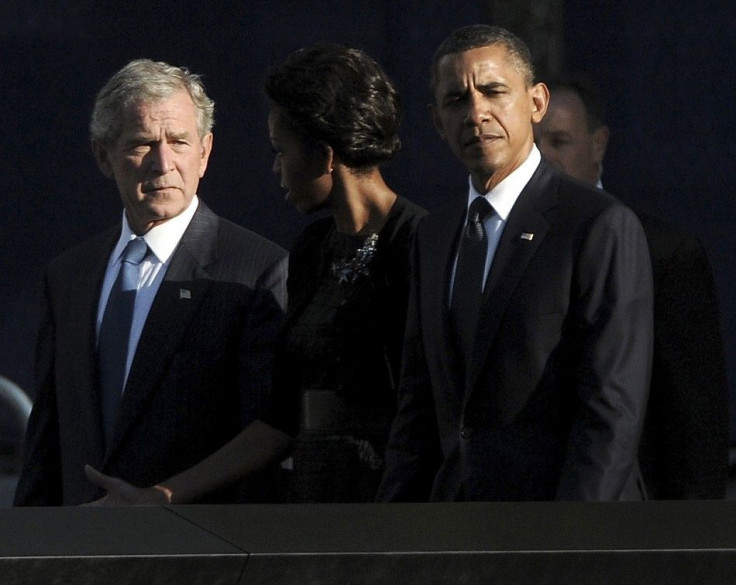Aging in Office: U.S. Presidents Often Outlive Peers

CHICAGO (Reuters) - Judging by their before and after photographs, U.S. presidents appear to age before our eyes, adding wrinkles and gray hair with each year in office.
But contrary to conventional wisdom, a few years in the White House do not appear to cut short the lives of U.S. presidents, and most live longer than their peers, according to a new study released on Tuesday.
Just because they experience what would appear to be accelerated aging outwardly, doesn't mean they will die any sooner, said S. Jay Olshansky, a demographer at the University of Illinois at Chicago, whose study appears in the Journal of the American Medical Association.
Olshansky became interested in the subject earlier this summer when President Barack Obama celebrated his 50th birthday in Chicago, their shared hometown.
Media coverage highlighted before and after pictures focused on the 44th U.S. president's graying hair and deepening wrinkles, and repeated the common refrain that the commander in chief tends to age at twice the rate as the rest of us.
That would imply that they died sooner than the rest of us, Olshansky said in a telephone interview.
He decided to test that theory.
Olshansky calculated how long U.S. presidents would have been expected to live based on their age and the year in which they were inaugurated and compared it to how long they actually lived. The four presidents who were assassinated were excluded from the study.
To estimate the toll serving as U.S. president took, he subtracted two days for every one day in office, approximating the effects of aging at twice the normal rate. At that rate, a four-year term would cut a president's estimated remaining lifespan by eight years.
NOT THE STRESS THAT KILLS
Olshansky found that 23 of the 34 U.S. presidents who died from natural causes did not appear to have their lives cut short by the stress of leading the nation. They lived longer than men of their same age and era - and in many instances far longer.
For example, the average age of the first eight presidents at their time of death was 79.8 years - during a time when life expectancy at birth for men was less than 40.
The reason is likely the effects of advanced education and better access to healthcare, Olshansky said.
All of these presidents benefited from the trifecta of exceptional wealth, almost all were highly educated and all of them had access to medical care, said Olshansky, who noted that there was no scientific way to directly measure the rate of biological aging.
At the time of inauguration, the average age of presidents in the study was 55.1, which means they managed to avoid illness and infectious disease long enough to reach that age and run for office.
They have survived the early perilous decades of life, Olshansky said. That is not trivial.
He said the most recent eight presidents who died of natural causes lived an average of 1.8 years longer than the first eight. Olshansky attributed that finding to advances in medical care.
As for the before and after photographs, Olshansky said stress may increase the visible signs of aging, but it does not shorten a president's lifespan.
It is a very clever way of expressing an important principle of what we call successful aging, Dr. William Hall, an aging expert at the University of Rochester Medical Center, said in a telephone interview. Hall was not involved in Olshansky's research.
But not all the presidents included in the study fared so well, according to Olshansky, who said 11 died earlier than expected at an average age of 62.1 years, compared to an estimated lifespan of 67.8 years. Many of these presidents held office between the years of 1841 and 1923, he noted.
For some reason, in that window of time those presidents didn't do that well, Olshansky said.
(Editing by Michele Gershberg and Paul Simao)
© Copyright Thomson Reuters 2024. All rights reserved.





















